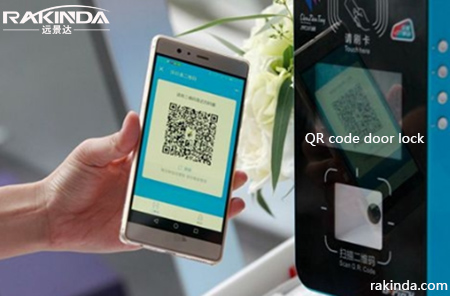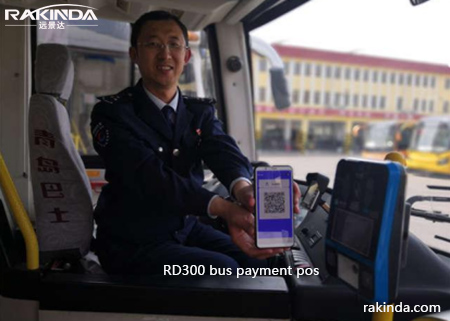On May 8, Tencent's bus code landed in Shenzhen, Tencent Base Camp. Not long ago, Beijing Rail Transit also began to fully test mobile phone scanning station. Prior to this, Shanghai, Hangzhou, Wuhan, Guangzhou and other cities have successively launched new modes of mobile travel and bus travel.
It is understood that at least 50 subways and public transportation systems in cities support mobile payments. The unique characteristics of high-frequency, high-viscosity, low-value, etc. of public transport have become the golden scene for mobile payment giants to catch up with the beach.
However, in the process of the transformation and upgrading of “mobile payment + bus travel”, some new business models were opened, which also triggered reflections on the use of data boundaries.

NFC and QR code payment battle
According to the reporter's understanding, the current payment methods in public transportation are mainly divided into NFC payment mode and scan code payment mode. Scan code pay is divided into two methods, one is the official bus and subway APP binding mobile payment as a payment method, Beijing, Shanghai is the use of this model; the other is the mobile payment software comes with a small module to support scan code By car, for example, in Hangzhou, Alipay will have a car code.
One of the biggest challenges in the bus and subway scene is the poor stability of the network. Scanning code payment will inevitably challenge the stability of the network. Especially during the peak period of travel, public travel payment must handle huge passenger traffic at high speed for a short time. Technology puts forward higher requirements. According to Alipay's introduction, the “Dual Offline QR code payment” technology solves the problem of paying for the entrance and exit gates and mobile phones without signals. The payment information is not displayed instantaneously, but within about 2-3 seconds after the “click” sound, the situation where both the gate and the mobile phone are off-line can also ensure that the passenger can successfully swipe the card.
The QR code model faces many challenges. First of all, the carrying capacity of two-dimensional code information is limited. The more information is encoded, the worse the recognition rate and decoding efficiency. Therefore, the information coding needs to be as compact as possible, and the security of the algorithm cannot be reduced. Ant Financial said that the technical team solved this problem by using ECC's two-level asymmetric algorithm to achieve a balance between information length and recognition effect.

In addition, two-dimensional code technology can only carry out a single item of information interaction. The scanning code device can identify the mobile phone two-dimensional code, but it is difficult to provide feedback information to the mobile phone at the same time. In this regard, Ant Financial said that the introduction of real names and credit, for the creditworthy users (sesame credit points more than 550 points) to provide "first ride after the payment" experience, but also for public travel to solve the real-name system.
Similar to Alipay's "dual offline QR code" technology, UnionPay also launched the "offline QR code" application. “At present, there are two kinds of QR codes for UnionPay, one is a consumer QR code for on-line transactions, and the other is an offline QR code. This off-line QR code is applicable to the application scenarios of signals required by buses and subways. Even if the mobile device and the gate are offline offline, it is possible to realize the ride experience, said one person close to the China UnionPay.
In fact, compared to the rapid rise of two-dimensional code payment technology in the past two years, NFC payment has been promoted earlier, but it has been tepid. Rakinda RD300 bus machine is widely used for bus application now.
Under the public transportation scene, NFC near-field payment has three advantages: data transmission, security, and user experience. There is no need to connect to a mobile network to avoid the embarrassment that mobile phones can't pay without a signal. In addition, the NFC mode eliminates many cumbersome steps such as opening an app, clicking a scan code, and the like.
However, in the field of mobile payment, the user scale and the user's familiarity with the payment brand have a greater impact on the transaction scale. "If purely from a technical point of view, NFC technology should be the future of bus travel. From the user's point of view, NFC is the most direct and simple, and it takes only one shot, neither opening the app interface nor calling the QR code. Under the same conditions, the sense of experience and efficiency are stronger, but at the moment the scan code has indeed become a payment habit." The aforementioned UnionPay told reporters.
Shenzhen RAKINDA Technology Co., Ltd. is specialized in the development of smart card hardware and software systems, production, sales and operations in one of the national high-tech enterprises. Products are widely used in city card, park area, retail businesses, parking fees, government platforms and other consumer areas. With years of focus on management, innovation, and development, the company in the industry.
Has a wide range of customer base and industry reputation, to achieve the city card applications and urban bus intelligent scheduling management.
RAKINDA engaged in barcode technology research and development for more than 18 years, we have a mature R & D team and overseas markets, we can help you quickly and easily realize unattended dream.
Contact Us:
If you want to know more information? Please fill in the following message form, we will contact you in the first time.
Copyright 2019 - 2024 Shenzhen Rakinda Technologies Co., Ltd. All Rights Reserved www.rakinda.com Privacy Policy




